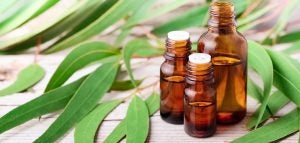“No Artificial Preservatives,” “No Artificial Flavors,” “No Synthetic Colors.” These are just a few of the many food labels that you may encounter at the grocery store. These labels imply that certain food additives must be worth avoiding. After all, why would all of these products specifically call out the absence of certain ingredients if they weren’t bad for us? But are they really bad? Are they unsafe, and should we be trying to avoid food additives?
First, lets talk about what food additives are. Legally, the term refers to “any substance the intended use of which results or may reasonably be expected to result — directly or indirectly — in its becoming a component or otherwise affecting the characteristics of any food.” There are many different ingredients that are considered to be additives, including: preservatives, vitamins and minerals, flavors, colors, sweeteners, leavening agents, emulsifiers, stabilizers, and thickeners. Consumers sometimes view these additives as unnecessary and something to avoid because they’ve heard somewhere that chemicals that you can’t pronounce are unsafe and unhealthy. I’d like to remind everyone that everything is made up of chemicals and that whether a chemical is natural or synthetic or whether you’re able to pronounce it or not holds absolutely no bearing on its safety.
This is where the “appeal to nature fallacy” typically comes into discussions as well. Consumers tend to consider anything that’s not natural as something they should avoid, but not only do many of these additives make food taste better, they can make the food safer and healthier as well.
Preservatives
Among the things that get discussed often are preservatives. Many consumers are OK with “natural” preservatives — after all, our ancestors used salt to preserve meats and fish. Preservatives, however, seem to get a bad rap, and I’m not sure why, as they keep food safe for much longer, which not only prevents many foodborne illnesses, such as botulinum poisoning, but also helps to reduce food waste.
Some preservatives are especially villified, because of their unfamiliar names, but they likely belong to one of the following categories: a salt (sodium benzoate, calcium propionate, sodium erythorbate, sodium nitrite, calcium sorbate), a vitamin (ascorbic acid or tocopherols), an acid (citric acid, benzoic acid, sorbic acid, propionic acid), or an antioxidant (BHA-butylated hydroxyanisole, BHT-Butylated hydroxytoluene, EDTA-Ethylenediaminetetraacetic acid, TBHQ-tertiary butylhydroquinone).
Some preservatives can add essential nutrients to the product as well. For example, ascorbic acid (Vitamin C) and tocopherols (Vitamin E) can be added as a preservative and can help to satisfy nutrient requirements. Nitrites in the form of sodium nitrite, or in the form of celery or beets or some other vegetable or fruit naturally high in nitrate, which is easily converted to nitrite, are added to meats to prevent botulinum poisoning. Benzoic acid and its calcium, sodium or potassium salts are used as antibacterial agents and antifungals in foods such as pickled cucumbers, low sugar jams and jellies, dressings and condiments. BHA, BHT, EDTA, and TBHQ are antioxidants, which prevent oxidative rancidity in many different foods in order to extend their shelf life and improve their safety, from an oxidation standpoint. Safety of unfamiliar ingredients is a concern for many consumers, but all of these ingredients have to pass extensive safety testing before being approved for food use. Once an additive is approved, the FDA issues regulations that may include the types of foods in which it can be used, the maximum amounts and how it should be identified on food labels.

Spices and flavors
Another type of food additive are spices and flavors. These are added to enhance the taste of food. Flavors are separated into two categories: natural flavors and artificial flavors. The FDA defines natural flavors to include any flavor isolated from natural sources like plant material (fruits, roots, bark, herbs, etc.) or animal products (meat, dairy, etc.). Artificial flavors are any flavors that are not defined as natural, even if they have the exact same chemical composition as flavors isolated directly from nature. As I stated previously, whether a chemical, such as a flavor, is natural or artificial tells you precisely nothing about its safety. Many nature-identical artificial flavors are actually available in higher purity than their natural counterparts and may be obtained with less damage to the environment.
Both natural flavors and artificial flavors have to be declared on the ingredient listing of a food package as well as on the front of the package with a statement such as, “Naturally & Artificially Flavored.” Just like all food additives, in order for a flavor to be used in food is has to have been previously approved by the FDA. This evaluation process is known as GRAS or “Generally Recognized as Safe.” The full list of artificial flavors approved for use in foods can be found here, and the list of natural flavors can be found here.
Colors
Colors are another category of food additives which help to maintain or improve the appearance of foods. A color additive is defined by the FDA as any dye, pigment, or substance that, when added or applied to a food, drug, or cosmetic, or to the human body, is capable (alone or through reactions with other substances) of imparting color. FDA permitted colors are classified as subject to certification or exempt from certification. Certified colors are synthetically produced and impart an intense, uniform color and are generally less expensive than colors derived from natural sources.
There are nine certified color additives approved for use in the U.S., for example, FD&C Yellow No. 6. You can find a complete list of certified colors here. Colors that are exempt from certification include pigments derived from natural sources such as vegetables, minerals, or animals. These colors may add unintended flavors to foods, are typically more expensive, and are less pure and less stable than their artificial counterparts. Examples include: annatto extract, beta-carotene, and dehydrated beets. You can find the full list of exempt colors here.
Certified colors have undergone extensive testing and have been found to be safe in the amount present in food. Exempt colors have not been tested as thoroughly as certified colors, but still must comply with regulatory requirements. One concern I hear a lot is that people have heard that synthetic colors are linked to childhood hyperactivity, however, links between color additives and ADHD have been inconclusive, inconsistent, and difficult to interpret due to inadequacies in study design. It is possible, but rare, to have an allergic-type reaction to a color additive. Certified colors must be identified on the ingredient declaration by their FD&C color and number, for example, “yellow 6.” Exempt colors must be identified on the ingredient declaration as “Color Added,” or by their common or usual names, for example, “annatto extract.”
Others
There are many additional food additives that are utilized for various purposes such as emulsifiers (eg. Lecithin, mono and diglycerides), which help to prevent ingredient separation, and stabilizers and thickeners (eg. Pectin, guar gum, carrageenan, xanthan gum), which help to improve texture and consistency. Leavening agents (eg. Baking soda, monocalcium phosphate) allow baked goods to rise during baking. Some additives help to control the pH of foods (eg. Lactic acid, citric acid), and some help to enhance flavor (eg. MSG, hydrolyzed soy protein). A summary of common food additives can be found here, and a complete list can be found here.
While some food additives have unfamiliar names and may be demonized in the media and by certain social media influencers, the truth is that today food and color additives are more strictly studied, regulated, and monitored than at any other time in history. Many people who fearmonger over these safe food additives cite rodent studies where the rats or mice were fed hundreds to thousands of times more of a given substance than are allowed in any food. Any negative effects from these studies are then referenced as though these are legitimate risks for humans at the incredibly low and safe levels in foods. Rat and mice studies can be helpful in determining the safety levels for food additives, however, to use these studies to elicit fear in consumers is incredibly irresponsible and incorrect.
When evaluating the safety of a substance and whether it should be approved, the FDA considers immediate and long-term health effects and various safety factors to determine an appropriate level of use that includes a built in safety margin. So, instead of being fearful of our incredibly safe foods we should be thanking scientists and farmers for the safest, most abundant food supply in history. Thanks, science!
Food Science Babe is the pseudonym of an agvocate and writer who focuses specifically on the science behind our food. She has a degree in chemical engineering and has worked in the food industry for more than decade, both in the conventional and in the natural/organic sectors.



